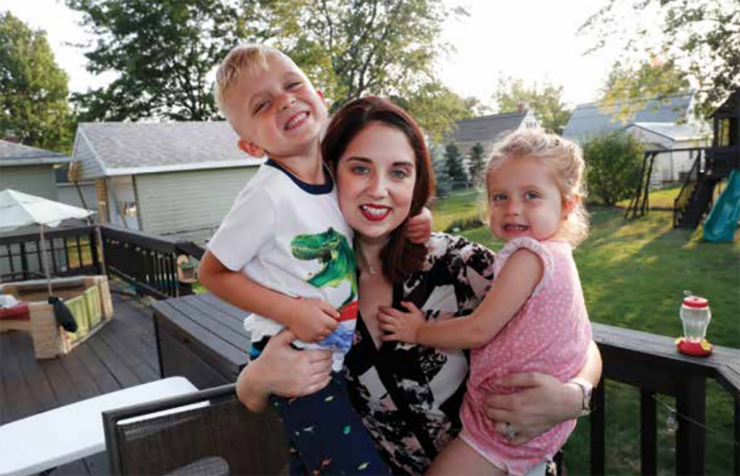COVID Highlights the Need for Caregiver Self-Care
January 12, 2021

Support, solidarity, and communication are key.
Just as healthcare workers have fought in the current pandemic to heal America, they also face the work of healing themselves. Every day, healthcare workers bear witness to severe illness and mass death while simultaneously tending to dozens of patients requiring previously unseen levels of care. At the same time, they are also fighting to protect themselves and their families from the novel coronavirus, and too often, they must heal themselves and/or family members after infection. Add to that health care’s pre-existing structural problems: susceptibility to worker burnout, and an already marginalized workforce that is overwhelmingly Black, Brown, and female.
Sandra Harris, a social worker and leader of Harris Solutions, says COVID is a perfect storm of trauma for caregivers. Harris, who works with 1199’s National Benefit Fund to develop programs that help workers manage COVID’s emotional stress, says the pandemic has highlighted the many ways in which our healthcare workforce is neglected.
“Quarantine does not exist for healthcare workers,” she says. “And related to that is a deep sense of trauma, which is a word not often used in underserved communities. Too often, minority and underserved workers do not have an option of saying ‘I have a problem,’ so we need to develop solutions for this workforce. We can start serving the needs of healthcare workers by letting them know there are tools out there to help them.”
The strain of being essential can be unrelenting; advisements to stay home, social distancing, and other protective guidelines simply do not apply to frontline workers. Caregivers also have an instinctive sense of responsibility for others, says Courtney Polka, a licensed clinical social worker at Niagara Falls Memorial Hospital. In times of crisis, the vocation of caregiving itself can be an obstacle to self-care.
“First and foremost, people need more [education] around trauma,” she says. “Many people think this has already happened, but not as much as you would think.” Polka adds that affirmation is vital. “When you are facing such a heavy load, you need a constant reminder [about self-care].”
Harry Beyer, a Physician Assistant at Elmhurst Hospital Center, says the intensity of the pandemic’s first wave was like nothing he had seen in three decades as a healthcare worker.
“At Elmhurst, we were at the epicenter of the epicenter,” he says.
“There was always that fear of the unknown in the beginning. No one really knew [about the virus]. That was the biggest issue.”
Beyer says that in the second wave, administrators need to do a better job handling learning curves and compensating workers who are already handling massive amounts of professional and personal stress.
“In addition to everything else we do, we are witnesses to death. We talk to COVID patients and their families,” says Beyer. “Some stressors don’t need to be there. If both sides are willing to work together, we could be in a better place. We cannot necessarily change the fact of people dying of COVID, but we can change relationships between workers and employers. It’s going to take a lot, but it can be done.”
Patti Spaulding, a registered nurse at St. Joseph’s Medical Center in Cheektowaga, NY, said that solidarity was the best short-term way of dealing with the stress of COVID. (As this magazine goes to press, Western NY is leading New York State in COVID cases.)
“It was hard every day to go in, but we knew we had to stick together,” says Spaulding. “But this was nothing like we had ever seen [before]. We are used to people dying, but people dying alone without their families [with them] is not something we are [at all] used to.”
Polka, Beyer and Spaulding say that caregivers must make time to disconnect and care for their own needs through time off, getting outdoors, quality time with family and friends, or talking to someone. The 1199 National Benefit Fund offers services and advice to help healthcare workers at its website, www.1199seiubenefits.org/ covid-19-resources. And you can also learn more about what is happening in your region and how the Union can help at www.1199onthefrontlines.org/ resources.
1199 Magazine | November & December 2020

